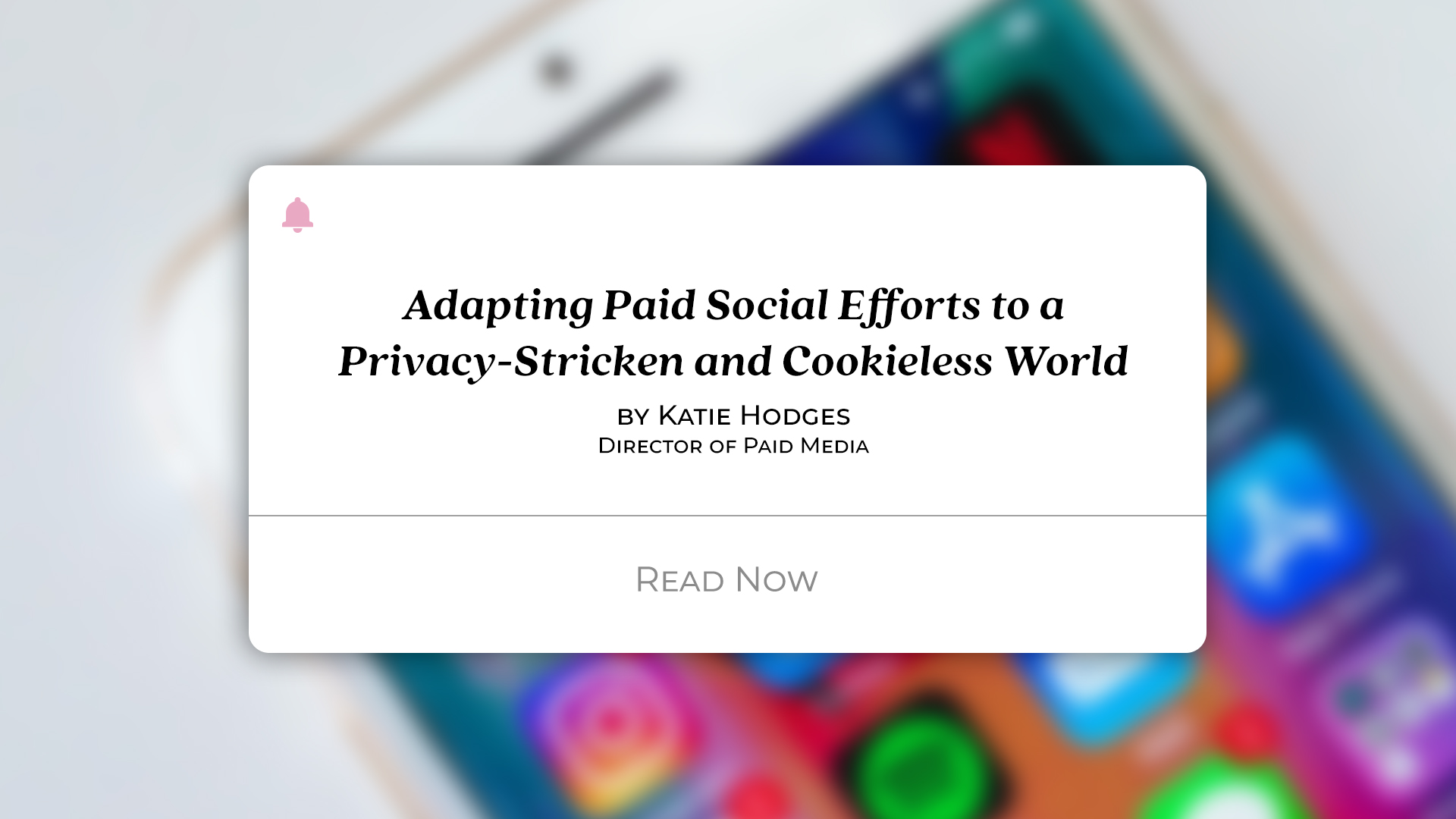
According to data from Statista, brands are expected to spend more than $56 billion dollars on social platforms in 2022. Although social ad spend hasn’t slowed down, brands have been challenged to adapt to privacy tracking constraints while learning how to remain nimble as digital platforms move to a cookieless future.
On the flip side, consumers are hungry for personalization, but not at risk of compromising privacy. Apple’s iOS14 release in April 2021 enabled iPhone users to take control of their tracking by requiring them to “opt-in” in order to allow apps to track their mobile activity. At the end of 2021, the opt-out rate for mobile tracking was close to 80% – proving users’ concern over their online activities being tracked. And to make matters even more complex for brands and marketers, Google recently announced their plan to eliminate third-party cookies in 2023.
Regardless of paid social spend increasing year over year, brands are still reeling from the impact of Apple’s iOS14 release and the impending doom of a cookieless world. Moving to a cookieless world will impact a brand’s ability to identify consumers who visit their website, as well as the ability to retarget these consumers in advertising efforts.
That said, it’s no secret that precise targeting and eye-catching creative is the bread and butter of paid social. As audience sizes dwindle due to privacy, it has become critical for marketers to adapt to changes in consumer data tracking. So, how exactly can brands remain nimble in a private and cookieless world? We’ve compiled a list of enhancements, below.
We all need to rethink the tried and true approach of targeting multiple audiences to test efficiencies. Meta recommends advertisers broaden their audiences and consolidate efforts into fewer, larger ad sets. They also advise brands to utilize their delivery system to find the best people to show ads to. Additionally, applying detailed targeting expansion can improve performance by allowing the system to reach a broader group of people than originally defined in the targeting parameters.
Although cookie pools are diminishing, it is still possible to build lookalike audiences from specific actions taken on a website. This can be done with a social pixel or through first party data lists, such as email subscribers. Lookalike audiences find users who are statistically similar to those interacting with a brand, while expanding the audience size between 1-10%. Given the reduction in audience pools due to privacy, we recommend going beyond 2% when sizing a lookalike audience. Remember, broad is best!
As privacy tightens and cookies begin to phase out, first party data collection remains crucial to successfully targeting throughout the customer journey. With first party data, users consent to providing their information directly to a brand. Outside of building email lists, first party data collection can be much more powerful when utilizing a Customer Data Platform (CDP). CDPs place a pixel on a website and start to build first party data in a snap – including names and email addresses, as well as the exact page they visited on a site. Integrating a CDP with a social ad platform allows brands to retarget their website visitors AND own their data.
Going beyond the native targeting options that everyone has access to, third party audiences are curated data sets composed of specific segments. Trusted providers can anonymously track users to websites and apps, using this data to build retargeting pools and ultimately reach these consumers on social. Segments like app users, behaviors, demographics and location data can be utilized when building third party audiences to test within social advertising efforts against native targeting options.
The ever-changing landscape of online user privacy will continue to dramatically impact the way brands approach their paid social efforts. It’s important for brands to adapt in the paid social space while adopting new targeting practices to stay ahead of the curve.
Need help revamping your paid social efforts to prepare for a cookieless world? Get in touch at info@socialflyny.com.
Written By: Katie Hodges, Director of Paid Media